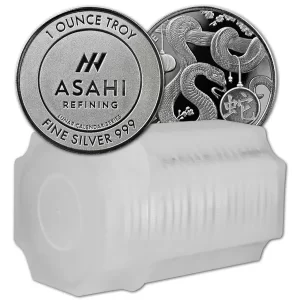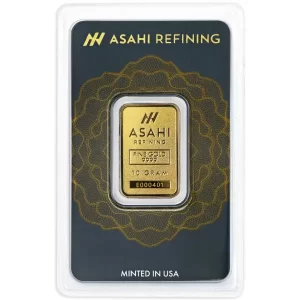Throughout history, different degrees of gold have been used as a medium of exchange. National governments created paper money that was pegged to the price of gold and served as a legal claim to actual gold for much of the 17th through the 20th century. Gold was used for international commerce. Therefore, for both political and economic reasons, nations had to have a stockpile of gold.
No government now mandates that all of its currency be backed by gold. However, governments continue to store substantial amounts of bullion as a backup against hyperinflation or other economic catastrophes. Gold is a hedging strategy against inflation and recession for a large number of investors, both institutional and retail.
With more than 8,100 tonnes, the United States has a substantial lead over all other countries in terms of its gold reserve holdings. The United States government possesses nearly as much gold reserves as the next three largest gold-holding nations put together (Germany, Italy, and France).
In 2018, Russia surpassed China to take over as the fifth-largest gold possessor.
These five nations hold the highest gold reserves as of March 2022:
- United States: 8,133.5 tons.
It was estimated that between 90% and 95% of the world’s gold reserves were held in American vaults at the height of the Bretton Woods system of international trade, when the US promised to store and secure the gold of other nations in exchange for dollars.
- Germany: 3,359.1 tons.
The Deutsche Bundesbank in Frankfurt am Main, the New York branch of the U.S. Federal Reserve Bank, and the Bank of England in London are where Germany stores its gold reserves.
3 Italy: 2,451.8 tons
The government of Italy was urged by some to sell some of its gold holdings in order to obtain money as a result of the eurozone crisis, but no such plans ever came to pass.
- France: 2,436.5 tons
Charles de Gaulle, a former president of France, called the United States’ bluff and started genuinely exchanging dollars for gold from the Fort Knox reserves, which contributed to the Bretton Woods system’s demise. Richard Nixon, the president at the time, was eventually compelled to remove the United States from the gold standard, eliminating the dollar’s automatic convertibility into gold, even though he was aware that the fixed rate of $35 per ounce of gold was too low.
- Russia: 2,301.6 tons
In 2018, Russia surpassed China to become the fifth-largest possessor of the yellow metal. The expansion of Russia’s gold reserves was interpreted as an effort to diversify away from American interests. To purchase the gold, Russia primarily sold U.S. Treasury bonds.
 Hi,
Hi,





















